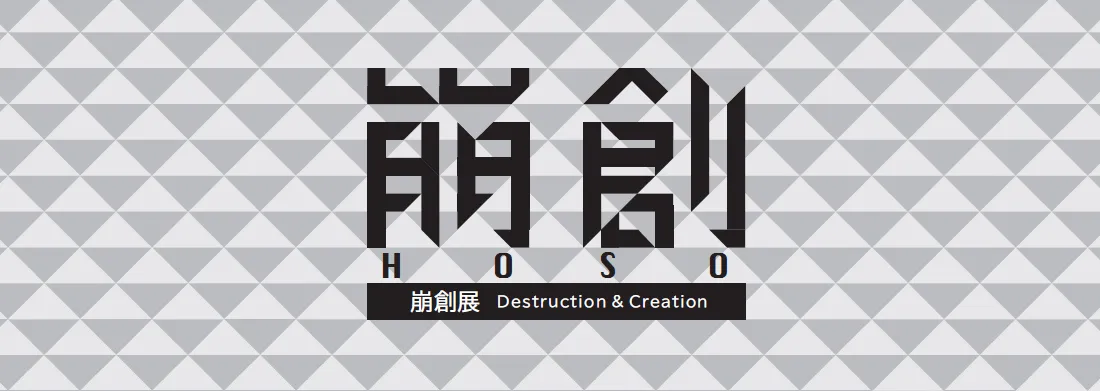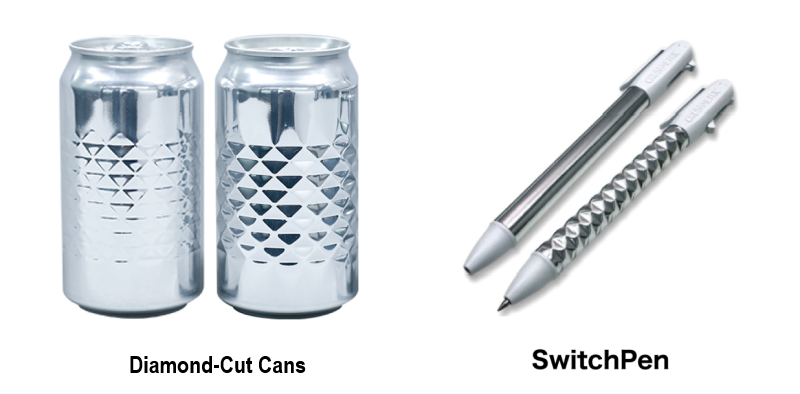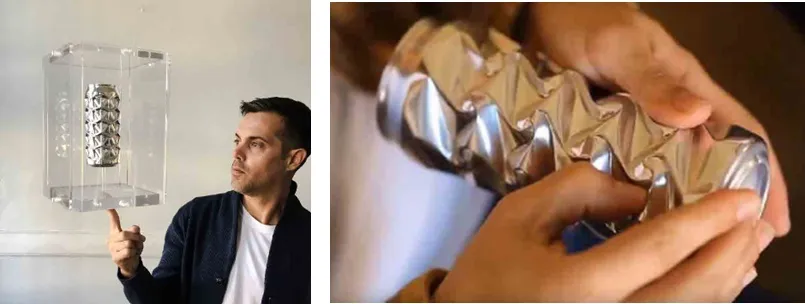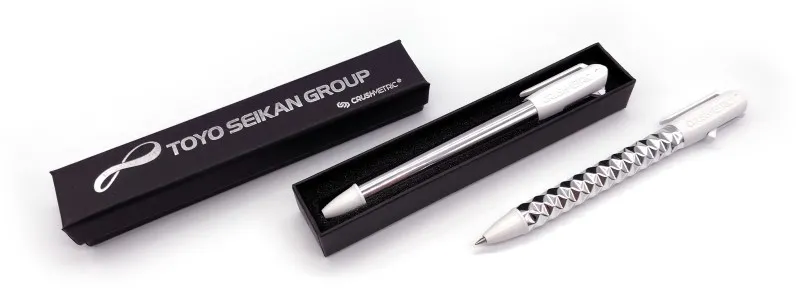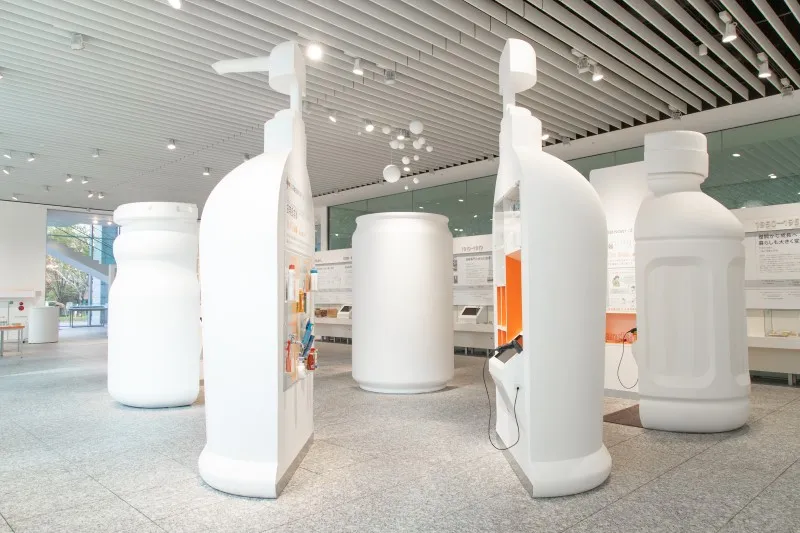The exhibition will showcase aluminum can art, including unpublished works by Noah Deledda, who created the empty can art that inspired the SwitchPen ballpoint pen released by CRUSHMETRIC Group. The SwitchPen and other products from the company, including stools and tumblers, will also be displayed. Visitors can appreciate the art while also being able to handle and try the products.
This exhibition was inspired by the coincidental shapes of the Diamond-Cut Cans manufactured by Toyo Seikan Group and the SwitchPen from CRUSHMETRIC Group. The Diamond-Cut Can, which uses aerospace engineering, and the SwitchPen, born from an artist’s imagination , arrived at the same shape through entirely different approaches. However, even in this accidental encounter, the artist’s concept of giving new value to empty cans and Toyo Seikan Group’s goal of resource conservation demonstrate a shared commitment to the environment.
CRUSHMETRIC is a product brand born in 2018 from the artwork of American artist Noah Deledda. Originally, he would partially dent and deform empty cans using his thumb as a way to pass the time while traveling. As he continued to experiment with various deformations, he became fascinated by the creative potential for cans to become beautiful art, leading him to begin creating artistically expressive works in 2004. He has since created more than 50 unique designs while confronting the limitations of deformation, using metal cans as his medium.
The shape of the SwitchPen, which serves as the inspiration for this collaboration, is based on one of his creations. Its design allows its shape to change smoothly when extending and retracting the pen tip (the surface crumples with a click to reveal the pen tip), resembling the shape of the Diamond-Cut Cans manufactured by Toyo Seikan Group.
The Diamond-Cut Cans manufactured by Toyo Seikan Group were developed based on the PCCP (pseudo-cylindrical concave polyhedral) shell presented by Emeritus Professor Koryo Miura of the University of Tokyo in 1969, with production starting in 1996. The PCCP shell is based on shapes created by destructive deformation during aerospace engineering research (specifically, a destruction model of supersonic aircraft bodies) that had very stable structures. This deformation, referred to as isometric transformation, maintains an object’s shape without stretching or contracting the material and produces minimal change in vertical strength while increasing lateral strength, leading to a stable structure.
Applying this robust shape, the Diamond-Cut Can was developed to reduce materials through its lighter weight while maintaining its strength. Steel Diamond-Cut Cans use approximately 30% less materials than traditional designs but with the same strength, while the diamond-cut shape on the aluminum Diamond-Cut Cans is only revealed when the pressure is released upon opening the can, providing a pleasant surprise for consumers. The quality of the reflected light also adds a luster that conveys the refreshing nature of the product.
By exploring interactions between the aluminum Diamond-Cut Can, which displays its diamond shape when opened; Noah Deledda’s art, with diamond-like shapes made using only his thumb on aluminum cans; and the SwitchPen, which transforms into a diamond shape by applying pressure through its click mechanism, Toyo Seikan seeks to learn from alternative approaches and continue working toward sustainable container development.
In commemoration of the special exhibition, Toyo Seikan Group has decided to adopt the SwitchPen, presented in a special box featuring the Toyo Seikan Group logo, as an official novelty to be used in future sales activities and other purposes.
There are no plans to sell or distribute the commemorative pen to the general public.
The Museum of Package Culture, 22nd Small Exhibition of Containers
HOSOTEN Destruction & Creation: The World of Aluminum Can Art
・Date: March 25 (Tuesday) to April 30 (Wednesday), 2025. Closed on Saturdays, Sundays, and public holidays
・Opening Hours: 9:00 AM to 5:00 PM
・Location: 2-18-1 Higashi Gotanda, Shinagawa-ku, Tokyo, 1st floor, Osaki Forest Building, The Museum of Package Culture
・Admission Fee: Free
The Museum of Package Culture opens up the secrets hidden within packaging containers. Its goal is to disseminate the cultural information that is embedded in packaging containers and to foster understanding and familiarity with containers among a broad audience, including local residents and the general public. The museum exhibits the history, technology, and innovations of containers and society’s relationship with them, from the birth of civilization to the latest in packaging.


